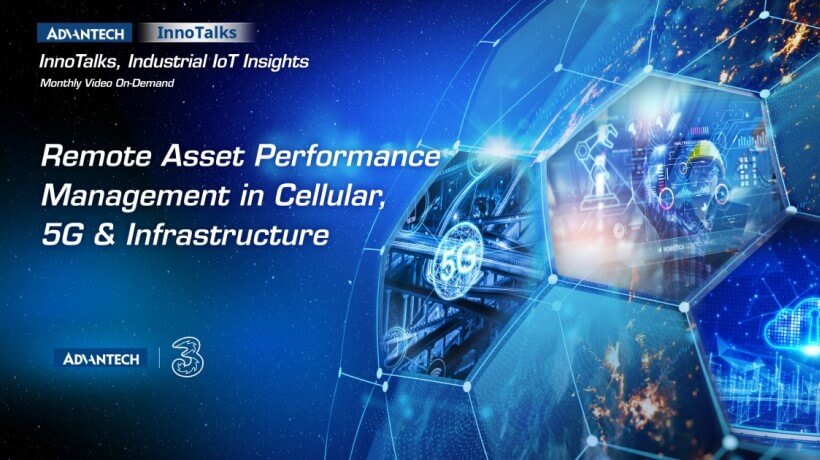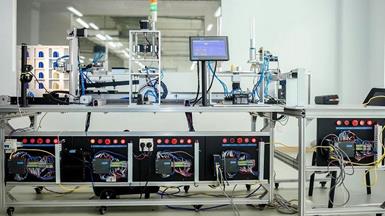Remote asset monitoring and management dramatically improves the lifetime cost of ownership of an asset by reducing truck rolls, improving system availability and increasing security. Whilst these capabilities may be an inherent feature of a modern product, they can also be retrofitted with the use of intelligent edge gateways. Advances in AI edge inference and machine learning mean that both modern and legacy devices can have augmented remote monitoring and maintenance applications applied, further improving the lifetime cost of operating an asset. Cellular backhaul provides a mechanism to add monitoring and management capabilities without affecting customer networks. Whilst 5G will bring new possibilities, the existing LTE network is already sufficient for the majority of use cases, and can be easily futureproofed with careful design. This means that most users can start to deploy remote asset management today.
The Definition of Remote Asset Management and Its Impacts
When we talk about an asset, we mean a piece of equipment, or a collection of devices that contribute to a process, which in turn leads to a business outcome. It might be some specific pieces of equipment on a remote site, the building in which they are contained, or the perimeter of the site itself. Some typical examples might be an equipment hut on a cellular transmission site, pipeline pumping station or wind turbine farm.
- If they fail, they impact other processes or business outcomes
- They typically operate in a steady state or cyclic mode in which some ‘normal’ operating conditions can be defined
- They can be impacted by external events, such as ambient conditions, operator error, vandalism or sabotage.
- A failure is likely to need an engineer to visit the asset to correct an issue, and the assets are typically geographically remote from where the engineer is normally located
Why remote asset monitoring is important
Intelligent Edge Gateways, Machine Learning and AI Inference
Once intelligent edge gateways are deployed, users can begin applying machine learning and AI inference to identify patterns in the locally recovered data that point to the start of a problem. The edge gateway's integrated AI inference engine can detect changes that are too minute for human operators to notice and can proactively sound alarms to draw attention to them before they impact outcomes. Over the next few years, AI and ML will change a wide range of businesses.
Intelligent Edge Gateways, Machine Learning and AI Inference
Private 5G however, brings a completely new dimension. If we think of a large facility or campus, where the traditional problems of wireless are evidenced by the unsuitability of Wi-Fi. Private 5G offers user data and voice services, but more importantly brings the possibility of automation, robotic control and AI to the edge in a controlled, secure and managed wireless network, with previously unheard of low levels of latency. This makes it ideal for applications involving automated vehicles, cranes and lifting devices, but also for safety and security use cases. Safety is crucial in environments where humans and automation interact and coexist, but thanks to low latency wireless communication, safety light curtains, warning systems, perimeter management, and proximity systems are now simpler, quicker, and more affordable to deploy.
About Three
Three Ireland is the IoT Centre of Excellence for Ireland, UK, Sweden and Denmark, but they also have sister networks in Italy, Austria and Asia. They have 99% 4G coverage and over 85% 5G coverage, and carry over half of all mobile data in Ireland on their network, meaning more than all other operators combined.
Three has invested over €2 billion in their world-class infrastructure, including €820 million in their network since 2015, and they have an annual network investment of over €100 million. Three’s aim is to provide its customers with a better-connected life through meaningful products, best in class service and a connected network experience.
Three is part of renowned global conglomerate CK Hutchison Holdings which is committed to innovation and technology. Its diverse businesses employ over 300,000 people in over 50 countries across the world. CK Hutchison has five core businesses - ports and related services, retail, infrastructure, energy and telecommunications.
Summary




/ICR324120190412012519.jpg)
-25/ICR-4401(S)20211004181418.png)
/ICR3241_00020190412154206.jpg)
-25/ICR-4453(S)20211005020307.png)
-25/ECU-150_01--_P_V2-(1)20230904170548.png)
